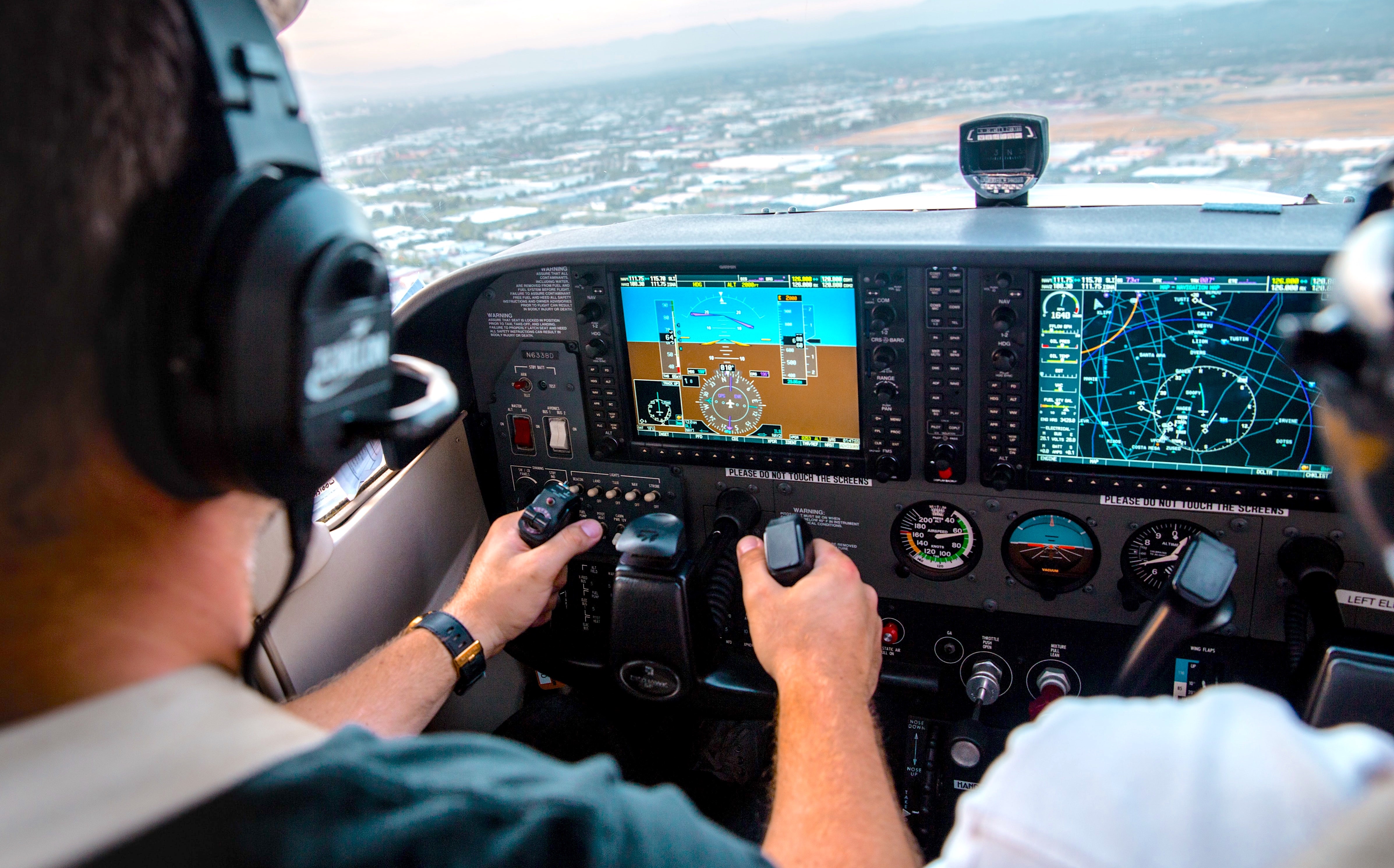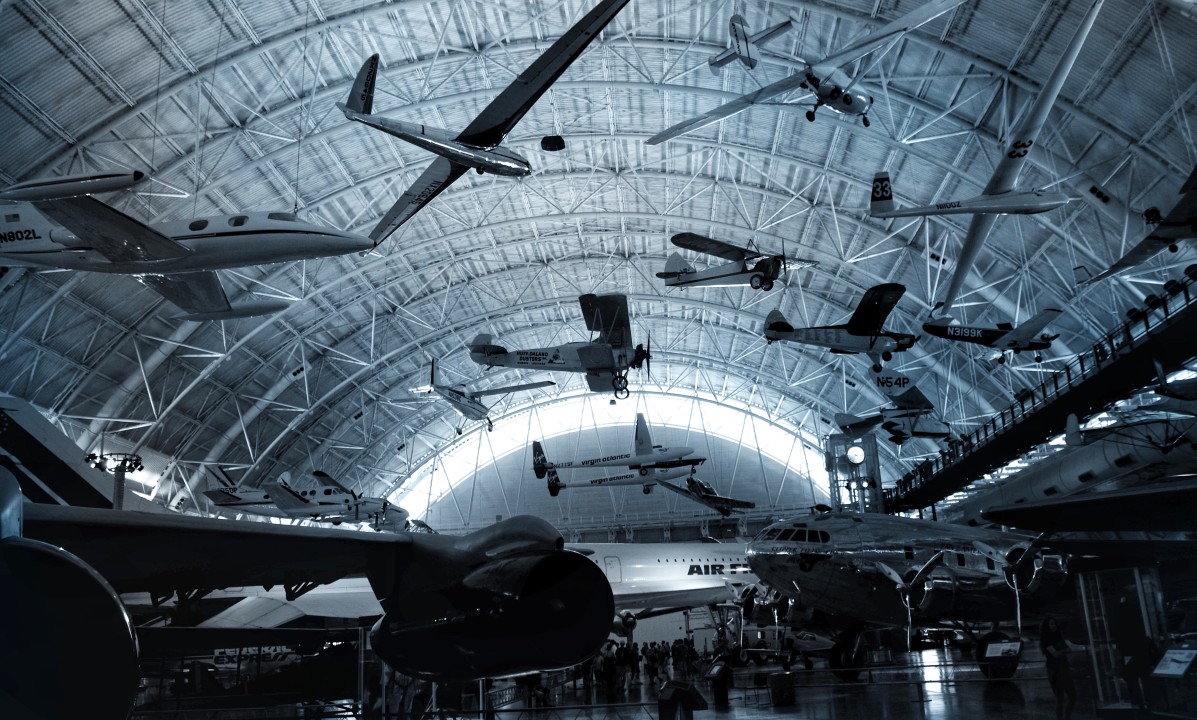Inflation: Rising Prices and its Effects on Pilots and Their Training

Inflation is the decline of purchasing power of a given currency over time. The quantitative estimate of the rate at which inflation occurs can be reflected in the increase in the price for a basket of goods and services in an economy, such as the United States’ . The rise in price for goods and services nationally, often expressed as a percentage, means that a unit of currency effectively buys less than it did before. Inflation can be viewed positively or negatively depending on the viewpoint and rate of change. Positive for the federal government for various reasons desires inflation, while negative for businesses and consumers, who see inflation as a degradation of their spending powers.
In a previous article Inflation: Higher costs and their effects on Flight Schools we discuss inflation and its effects on flight schools and aviation businesses and give some recommendations as to how aviation businesses can deal with inflation. In this article we want to talk about how inflation will affect the individual pilot, their pilot training, and the career prospect they have given increased cost of getting into industry as pilots.
Key Takeaways
- Inflation is here and is having adverse impacts on all parts of the aviation industry.
- Cost of Pilot training is increasing with inflation and will no doubt affect pilots and prospective students pilots.
- Pilots are having to respond to inflation and the rising cost of training with several methods during and after pilot training. Prospective pilots will have to be more analytic and strategic when it comes to obtaining their training during this time, however, there are some ways to help pilots and prospects during these times.
How does inflation affect individuals?
Inflation, as manifested as the steady rise of prices for goods and services over a period, has many effects, good and bad. Inflation erodes purchasing power or how much of something can be purchased with currency, and encourages consumers to spend and stock up on items that are slower to lose value. With no intervention, it lowers the cost of borrowing and reduces unemployment. The Federal Reserve usually will take action to slow down the economy during periods of inflation. The result of this action along with other market forces causes interest rates to rise. While if, how, and when the Federal Reserve may take action is not within the scope of this article. However, It is important to be aware of how inflation actually affects individuals, some examples are below
Erosion of purchasing power: Inflation affects individuals when the same amount of money can buy less goods and services than it did before. For pilots this means that they spend more money to buy the same amount of pilot training related goods and services as they did before. The purchasing power that an individual possess decreases with inflation which also affects different markets in certain ways. When it comes to costly purchases such as cars, houses, or even an education, inflation creates a challenge for individuals.
A rise in the cost of borrowing: For the past century in the U.S., the approach to managing inflation using monetary policy. The U.S. central bank relies on the relationship between inflation and interest rates,they fear outright deflation nearly as much as they do hyperinflation. Rather, they tug on interest rates in either direction in order to maintain inflation close to a target. When inflation occurs it’s a typical response to increase the cost of borrowing to slow or diminish inflation. When there is not so much cash moving around, money becomes more scarce. That scarcity increases its value and can deflect the effects of inflation after some time.
Inflation furthers inflation: Inflation tends to have a snowball effect in that once it has shown to start it typically increases. Inflationary rates are likely to further increase and will have a tumble effect without any relief in the foreseeable future, sometimes to what is called hyper-inflation.
Inflation and its effects on pilots
The rising cost of money is slowly adding the challenges that are faced by flight schools, and airlines who already operate on razor-thin profit margins. Aviation businesses often use borrowed money to finance operations, expansions, and updating equipment. When the cost of borrowing money goes up, it can have a negative impact on those razor-thin profit margins. With the state of the economy having its influence on flight schools, it gets tricky for pilots who are essential to these businesses. That said, there are factors from inflation that will affect pilots.
Increased Cost of Training: Inflation has been shown to have adverse effects on airlines, flight schools, and other aviation businesses, but it also has an effect on pilots with their cost of training. The cost of training is increasing alongside inflation due to its own factors, along with other areas of the aviation industry becoming more costly, this can become a substantial financial hurdle for pilots.
Flight Times: As inflation continues to increase with the cost of training it may be more costly to obtain flight times and even getting the opportunity to fly. The pilot shortage brought an increase for flight schools, which is talked about in our article ‘The Pilot Shortage – A Challenge for Airlines, Possible Boom for Flight Schools.’, with this increase means that there are many pilots and students trying to get their flight times in, which is going to have the effect of making flight times and opportunities more important if other areas of the industry are not keeping up with the demand for instructors, students, and needed flight times.
Slow fix to pilot shortage: Co-pilots may be used less by Part 135 and Part 91 operators not absolutely necessary and is legal to do so to save on employment cost. In addition to this, flight schools may not hire as many instructors as quickly as the market demands due to how much they are going to cost so pilots will have to consider a slow increase in pilots in the industry, the workload may still be on the shoulders of today’s students and certificated pilots as the industry bounces back from a pilot shortage that was heightened by the pandemic.
Inflation, cost of borrowing, and pilot training
With the state of the economy having its influence on flight schools and pilots, it has special influences on pilots learning at academies and institutions, and especially for those that are considering starting. Inflation and its run-on effects may increase the cost of pilot training. Cost of training is mainly an outcome of increasing cost in other areas that are going to have to trickle down to pilots and their cost of training. Some areas that are going to have a run-on affect on pilot training are as follows
Good Instructors or schools in higher demand: The pilot shortage has brought about a new flight instructor demand that flight schools have not readily seen before. Unfortunately, inflation is creating an environment for flight schools to not be able to fully capitalize on the instructor demand as they are having to put money in other places instead of hiring instructors and more staff. This means that instructors are not going to be hired at such an excessive rate that students will come in, so schools are going to have to pay the instructors they do have more as another run-off of inflation that can be put on pilot training.
Increased insurance premiums: Flying Magazine notes that under certain circumstances, Part 61 pilot training for example, you are not required by law to have student pilot insurance, also known as renter’s insurance, but you definitely should. Some aviation schools or flight training organizations will not enroll you, or lease or rent an aircraft to you as a student, if you do not have a renter’s insurance policy.
Increased need for efficiency: While flight training is increasing, it’s important to understand where and how in the flight training process that cost can be saved or decreased. One effect of inflation is that it’s going to start calling for increased efficiency for pilots so they can move strategically in this economic environment. Knowing the best instructors and flight schools, while being able to access them properly to save time and money is becoming necessary for pilots during these inflationary periods with increased cost of training. Profound technological developments are likely to be used by pilots to aid them in these efforts.
How does rising costs affect prospective pilots?
Rising costs are affecting current pilots but also those who are still on the prospects of becoming a pilot. Of course a higher cost of training will need to be evaluated by those looking to obtain a pilot’s license during this time, there are several ways that inflation and rising cost can affect prospective pilots.
Higher cost of borrowing for loans to obtain education: Prospective pilots are likely to first look into the cost of how much instructing and such will cost overall. Most student’s seek help from loans and lenders that can help them pay for school upfront and secure interest rates. While the cost of borrowing is prospectively increasing, it will undoubtedly have effects on the loans that students are likely to need for school. It may be better for prospective pilots to start getting certified sooner than later to avoid even higher interest rates in the future.
Increased cost puts some out of access to training: One unfortunate circumstance is that even a slight increase in the cost of training may put some prospective pilots at an economic disadvantage to start or continue training and they may not deem it as worth it in total. The increasing cost may affect prospective pilots in the matter that some may not go through with their pilot training, or may have to wait for the economy to level itself out.
Seeking cheaper training that may not be as adequate: While costs are high one way the prospective pilots may try to mitigate their cost for training by seeking out schools and instructors that are below the typical cost. While there may not be anything different from a smaller flight school training to a bigger academy, there is the implication that sometimes a lower cost is not good because it does not ensure adequate training, good instructors, and the proper environment to learn in. When pilots do not get the proper training or instructors that can fit their schedule and learning needs, it can become a big waste of time, money, and effort for the student! It’s important for students to be sure that even in times of inflation, when it comes to something as important as flight training, they do not cut corners. It’s always important that pilots do research to find the right school and flight instructor.
How are pilots likely to respond to increased cost of pilot training?
Fight for new regulations: Regional carriers have asked the FAA to make some sort of allowance that will let them avoid the 1,500 hour threshold for co-pilot experience, as stated by Josh Lew, in an article with Travel Pulse. Some airlines are asking for a lower flight hour requirement for co-pilots. If this minimum were lowered, then it would save money for pilots on their training. However, because of safety concerns, a return to a 250-hour minimum for co-pilots is unlikely. Airlines could start their own training programs, educating pilots in-house, typically with the stipend of them working for them for a certain amount of time at the least. See our article, ‘Airlines And Pilot Training Academies’. Other ways that pilots could respond to fight for new regulations is for the allowance of simulator training to be more accessible or permitted.
For further reading on how the FAA might respond to the pilot shortage vis-a-vis the 1500 hours rule, see our article, ‘The Pilot Shortage – Getting “Help” From The FAA…’.
Seek higher paying employment: To deflect the higher cost of training that pilots may have to endure, they will likely respond by immediately seeking higher paying jobs and certifications to get a head start on their financial path within the industry. New pilots may go immediately into commercial airline positions or getting certified as instructors to ensure that they are able to pay off flight school costs. Pilots will definitely want to ensure they are getting their money’s worth especially with the higher cost of training, so they will waste no time to find a job with their new skills, especially for companies and positions that pay well, such as corporate flying.
Trying to get training done quickly: Another response from pilots is that they are going to get their training done as efficiently as possible to save them time and get them out of having to pay for prospective future costs that may increase. While the pilot demand is still high, and the market for new pilots is showing an impressive pay-off and an impressive career path to get into as the state of the economy remains uncertain. It may be a viable strategy for students to try and accelerate the time it will take for them to complete flight school in order to begin their career, and avoid even increased cost of training in the future. There are schools aircraft across the country that specialize in accelerated training programs.
How should pilots deal with the prospect of higher cost of training?
In light of the economic environment that we are in, it is necessary for pilots to take the actions or approaches they do have access to to save cost and help them achieve their goals. While inflation is still seeming to rise, and the cost of training is changing with that, it’s important to be aware of some ways that pilots can deal with the prospect of higher cost of training.
Seek to make an assessment if the career prospect in the future is worth the investment today: One of the first things pilots should do is have a realistic career insight and prospect for the future of their career in the industry. Making an assessment of the career in terms of growth, over-all pay-back, and how long it would take to get into a comfortable place in the industry.
Seek alternative ways to fund pilot training: Training is not typically something you would want to put off or delay so one the most helpful things pilots can do to deal with higher cost of training is to seek alternative ways to fund pilot training. There are alternative methods to paying out of pocket or traditional loans for training, such as grants, scholarships, programs that will pay for training for a job role, and military enrollment for training.
Seek to cut costs by using online tools and technologies: Another one of the most impactful ways to deal with the prospecting increases in training cost is to mitigate cost by using online tools and fundamental technologies. When you are using other avenues to save cost, such as increasing efficiency by saving pilots, time, money, and effort to find the right instructors that will work with them, their schedule, and plan, is essential to saving for any pilot. So much is wasted when pilots spend an unnecessary amount of time finding the right instructor and training plan. For one, when pilots are seeking training, it is a very time consuming effort to even start the training itself. With great online tools to save pilots, time, money, and effort, they are better able to deal with the higher cost of training.
Finding ways to build time: In order to meet FAA hours requirements, pilots need to build up flying time, which is definitely time consuming and push the cost of training further if not done so efficiently. Some ways that pilots can build their times to help mitigate cost and meet their criteria better. Flight instructing is by far the most common way to build flight time, and with flight instructors in high demand, now is a great time to pursue a flight instructor certificate. Another way to build time by joining a flying club. Flying clubs offer a great way to save money while building up your flight time. Memberships may include other benefits such as discounted aircraft rental rates and discounts for fuel. Some flying clubs also have instructors to provide guidance and additional training. One more creative way to build time is to Fly aerial photographers. Despite the rise in popularity of drone photography, many photographers still choose to shoot aerial work themselves. Some pilots take their own photos while flying, and others are paid to fly while professional photographers capture the aerial shots. Still yet another is doing banner towing.
This economic environment has created a special circumstance for pilots, current and prospective. While the industry recovers as a whole, the pilot shortage brings a new demand for pilots and brings a boom to flight schools. This is head-winded with the reality of inflation, the rising cost of borrowing money, and the increased cost for flight training. It’s no doubt that many answered the call for the world’s next best pilot’s. There is an abundance of bright minds that are pursuing their passion and interest, they are unfortunately poised with the special environment of today’s world but, as pilots always do, they will forge the path for a brighter future!
Thank you for reading this week’s On Aviation™ full article. To provide you with even greater content, we would love to hear about what areas of the aviation industry you want to know more about. Please give us your suggestionsby filling out our webform at: https://atimsaviation.com/on-aviation-content-request/
Remember you’re always invited to continue the conversation on our Twitter and Instagram, until next week!
Orlando – On Aviation™





